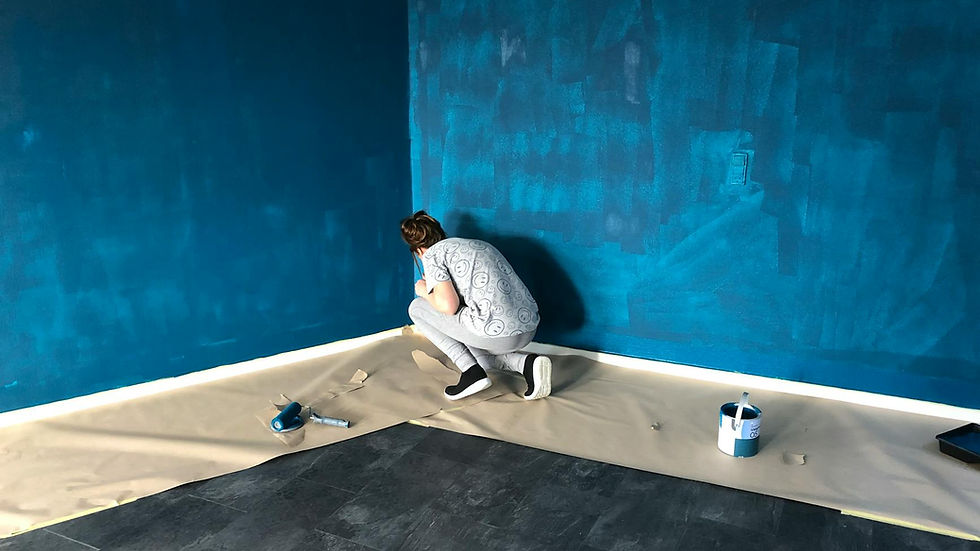Clean Mold From Leather Shoes: Homeowner's Guide
- Riley Thorne

- 1 day ago
- 4 min read

Have your favorite leather shoes started sporting a fuzzy, unwelcome guest? Mold growth on leather is a common problem, particularly in humid environments. Fortunately, you don't need to toss them in the trash! This comprehensive guide will equip homeowners with the knowledge and tools to safely and effectively clean mold from leather shoes, restoring them to their former glory. We'll cover identification, prevention, cleaning methods, and long-term care, ensuring your footwear stays mold-free.
Understanding Mold on Leather Shoes
Mold thrives in damp, dark environments. Leather, being a porous material, provides the perfect breeding ground when combined with moisture. Before you begin cleaning, it's crucial to understand what you're dealing with.
Identifying Mold Growth
Mold can appear in various colors – white, green, black, or even gray. It often presents as a fuzzy or powdery substance on the surface of the leather. A musty odor is another telltale sign. Don't mistake dirt or scuff marks for mold. If in doubt, a closer inspection under good lighting is necessary.
Why Leather is Susceptible
Leather is an organic material. Unlike synthetic materials, it contains natural oils and fibers that mold can feed on. Exposure to humidity, spills, or improper storage significantly increases the risk of mold growth. Neglecting regular cleaning and conditioning further exacerbates the problem. Approximately 80% of homes in the US experience humidity levels high enough to support mold growth at some point during the year, increasing the risk to leather goods.
Preparing to Clean Mold from Leather Shoes
Before diving into the cleaning process, gather the necessary supplies and prepare your workspace. This ensures efficiency and minimizes the risk of further damage.
Essential Supplies
Soft cloths or microfiber towels
Mild soap (leather-specific if possible)
Distilled water
Rubbing alcohol (isopropyl alcohol)
Leather conditioner
Soft-bristled brush (old toothbrush works well)
Face mask and gloves (for personal protection)
Vacuum cleaner with a brush attachment (optional)
Preparing Your Workspace
Choose a well-ventilated area, preferably outdoors. Mold spores can become airborne during the cleaning process, so good ventilation is crucial. Cover your work surface with newspaper or a drop cloth to protect it from spills and stains. Always wear a face mask and gloves to prevent inhalation of mold spores and skin irritation.
Step-by-Step Cleaning Process: A Complete Guide for Homeowners
Now that you're prepared, let's move on to the cleaning process itself. Follow these steps carefully to effectively remove mold and protect your leather shoes.
Removing Surface Mold
Begin by gently wiping off any loose mold spores with a dry, soft cloth or vacuum cleaner with a brush attachment. Be careful not to spread the mold further. Dispose of the cloth or vacuum bag properly after use. This initial step removes the easily dislodged mold and prepares the surface for deeper cleaning.
Cleaning with Soap and Water
Mix a small amount of mild soap with distilled water to create a gentle cleaning solution. Dampen a clean cloth with the solution and gently wipe down the affected areas of the leather shoes. Avoid soaking the leather. Pay particular attention to areas with visible mold growth. The goal is to lift the mold without damaging the leather's finish.
Disinfecting with Rubbing Alcohol
After cleaning with soap and water, dampen another clean cloth with rubbing alcohol. Gently wipe down the affected areas again. Rubbing alcohol helps to kill any remaining mold spores and disinfect the leather. Use it sparingly, as excessive alcohol can dry out the leather. A concentration of 70% isopropyl alcohol is generally recommended.
Drying and Conditioning
Allow the leather shoes to air dry completely in a well-ventilated area, away from direct sunlight or heat. Once dry, apply a leather conditioner to restore moisture and prevent cracking. Follow the manufacturer's instructions for application. Conditioning the leather after cleaning is essential to maintain its suppleness and prevent future damage.
Preventing Future Mold Growth
Once you've successfully cleaned the mold from your leather shoes, it's essential to take steps to prevent it from returning. Proactive measures are key to long-term protection.
Proper Storage Techniques
Store your leather shoes in a cool, dry place with good ventilation. Avoid storing them in damp basements, closets, or garages. Use shoe trees to help maintain their shape and absorb moisture. Investing in cedar shoe trees is highly recommended, as cedar naturally repels mold and insects.
Regular Cleaning and Conditioning
Regularly clean your leather shoes with a soft cloth to remove dirt and debris. Apply leather conditioner every few months to keep the leather moisturized and protected. A consistent cleaning and conditioning routine can significantly reduce the risk of mold growth.
Addressing Moisture Issues
If you live in a humid environment, consider using a dehumidifier in your closet or storage area. Silica gel packets can also help absorb moisture inside shoe boxes. Promptly address any water spills or dampness on your leather shoes to prevent mold from taking hold.
When to Seek Professional Help
In some cases, mold infestation may be too severe to handle at home. If the mold has deeply penetrated the leather or if you are unsure about the cleaning process, it's best to seek professional help from a leather cleaning specialist. Attempting to clean severely damaged leather yourself could cause further harm. Additionally, some types of mold can be hazardous to your health, requiring professional remediation.
Cleaning mold from leather shoes is a manageable task for homeowners with the right knowledge and tools. By understanding the nature of mold, following the step-by-step cleaning process, and implementing preventive measures, you can keep your leather footwear in excellent condition. Remember to prioritize safety, use gentle cleaning methods, and provide proper care to ensure the longevity of your shoes. Take action now to protect your investment and keep your shoes looking their best! If you're unsure about any step in the process, don't hesitate to consult a professional for guidance. Your shoes will thank you for it!



Comments